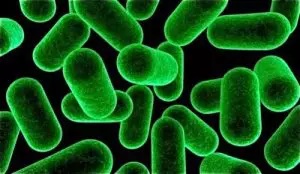A group of inventors from the University of Cambridge have long worked to find new ways of producing energy. Together with representatives of other UK universities, they were able to create special wallpapers that are capable of producing electricity. It is interesting that the invention is able to operate as a solar panel, and as an accumulating device.
The initial stage of production of such wallpapers was the development of special ink with cyanobacteria, thanks to which the inkjet printer was able to realize the idea of scientists. It is known that cyanobacteria have the ability to photosynthesize. The printer applies the ink to a pre-prepared layer consisting of carbon-based nanotubes that have good conductivity. Nanotubes are placed on future wallpaper, too, using printer printing. These special layers and represent the whole essence of innovation.
 Wallpapers begin the process of generating energy after gluing on the wall and immediately accumulate the received electricity. Scientists claim that some of the wallpaper, which has the size of a 10-inch tablet, is capable of providing a single diode bulb. The undeniable advantage of the development is that such a coating for walls is alive. After application of ink, bacteria actively develop and live in wallpaper, providing by means of photosynthesis generation of electricity.
Wallpapers begin the process of generating energy after gluing on the wall and immediately accumulate the received electricity. Scientists claim that some of the wallpaper, which has the size of a 10-inch tablet, is capable of providing a single diode bulb. The undeniable advantage of the development is that such a coating for walls is alive. After application of ink, bacteria actively develop and live in wallpaper, providing by means of photosynthesis generation of electricity.
The inventors have already outlined a rather wide range of possible applications of their development and the benefits obtained from it. Although the wallpaper produces little energy, they can be used as biodegradable sensors. Wallpaper can provide the house with ever fresh air and at the same time feed digital technology. And after they have outlived their own, they can be sent to scrap without fear for the environment.
 The technology of microbial biological photovoltaics was based on the development. This method involves the conversion of sunlight through the use of living bacteria. The technology is quite promising, although it has some difficulties, the elimination of which is now in the immediate plans of scientists-developers. The main difficulty of the method is scaling. A sample wallpaper was produced, but it’s not yet clear how it is possible to put this process on a production line.
The technology of microbial biological photovoltaics was based on the development. This method involves the conversion of sunlight through the use of living bacteria. The technology is quite promising, although it has some difficulties, the elimination of which is now in the immediate plans of scientists-developers. The main difficulty of the method is scaling. A sample wallpaper was produced, but it’s not yet clear how it is possible to put this process on a production line.
The second difficulty is the limited life of bacteria. Complexities are slightly leveled by the presence of an inkjet printer, but they remain. If the developers cannot properly organize the production of such wallpapers in large volumes, then this method can be reflected in the manufacture of biodegradable sensors.


